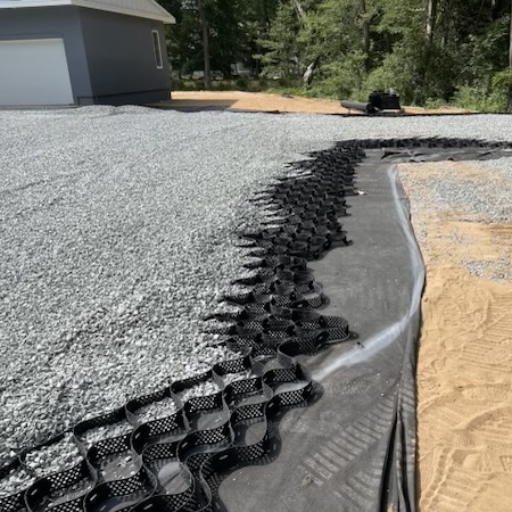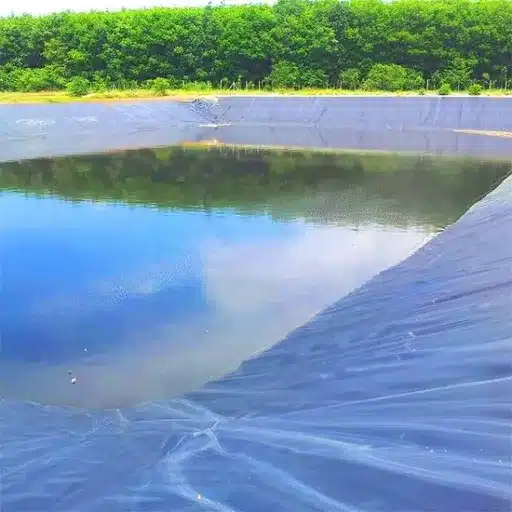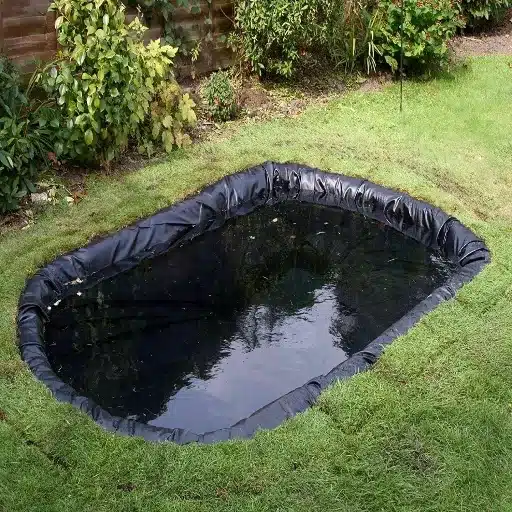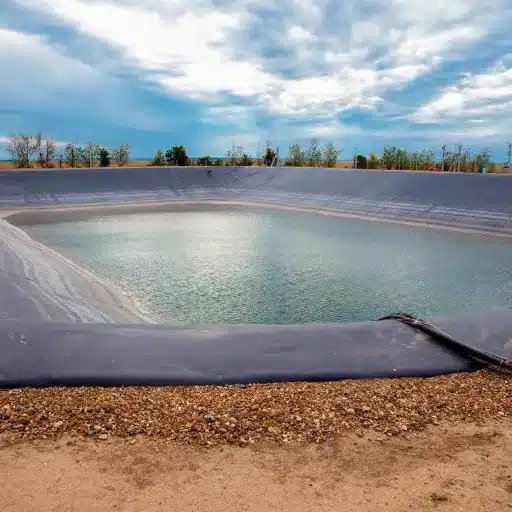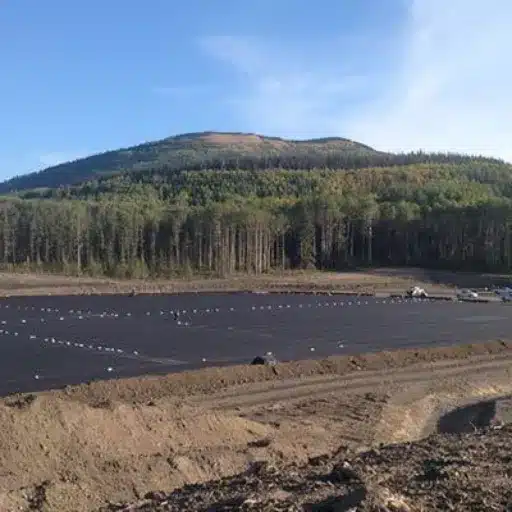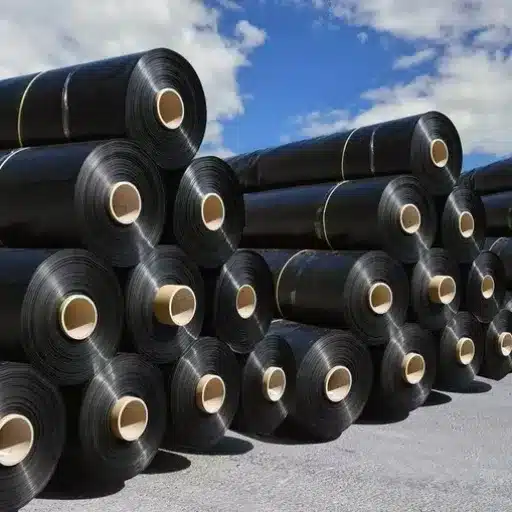The apt foundation is key to building a driveway that is durable, stable, and environmentally friendly. Traditionally, paving has always been incapable of the mechanisms of distributing weight properly, combating erosion, and preserving integrity for periods of time. Modernization sets in with the geocell ground grid-a revolution in the way driveway construction is viewed. This article will highlight how a geocell ground grid can be used as a gravel driveway paver and an excellent geo-grid system for support and sustainability. Whatever you have planned, the guidelines provided will certainly help you make more enlightened decisions regarding your driveway structure.
Introduction to Geocell Driveways
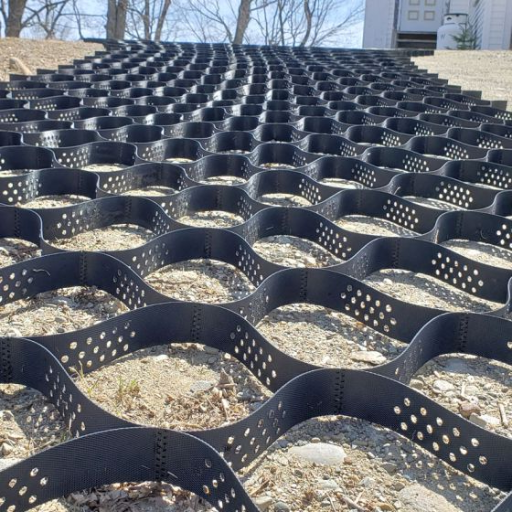
For job sites requiring a driveway, geocell grids present a weather-resistant, durable, and environmentally friendly method to ensure a stable and permanent driveway system. One factor for consideration is how well they distribute loads, retaining gravel scattered about with it, or allow water to drain, making them a good option for new jobs as well as the improvement of pre-existing driveways.
What can a geocell do for you?
A geocell-type, three-dimensional honeycomb structure made out of high-density polyethylene (HDPE) or other totally good materials needs to be filled with soil, gravel, sand, or other aggregates until a base is formed that can be stabilized and reinforced for respective applications. The system was initially developed to provide military road support on soft and unstable terrain; today, due to their versatility and effectiveness, geocell grids are widely used in civil engineering, landscaping, and driveway construction.
They reinforce the roadway bed by very good load dispersion and by lessening stress on the subbase, thereby keeping it from rutting or sinking. This is of more value where subsurface conditions are inherently poor or where the soil and surface are a pathway for heavy vehicles.
In light of recent findings, geocell technology uses up to 50% less gravel while offering enhanced stability. Other benefits are they also enhance drainage while they stop water from pooling or flooding and keep soil erosion at a minimum, thereby promoting sustainable construction. Tests, for instance, proved that geocells can increase the load-bearing capacity of soft soil by a factor of five compared to unreinforced conditions, thereby reinforcing their standing as strong yet cheap options for driveway and ground reinforcement projects.
The modern geocell grids are, most of the time, resistant to UV and durable to the extent that they can last for more than 50 years under normal usage, which makes them most economical and sustainable compared to traditional driveway materials.
The Need for Gravel-Driveways
Gravel driveways are becoming more and more popular among homeowners and developers because of their affordability, durability, and versatility. One of the major advantages of gravel driveways is their price point. The average price of installing a gravel driveway is anywhere between $1 to $3 per square foot, which is way below the price of installing an asphalt or concrete driveway that goes above $4 to $10 per square foot. Thus, gravel proves especially advantageous for properties that are quite large or projects that are limited by budgets.
Apart from affordability, gravel driveways also offer excellent drainage capabilities, thereby reducing the risk of flooding and pooling in times of heavy rainfall. This is crucial in regions that receive heavy rainfall. Also, the lifespan and performance of gravel driveways are extremely heightened by a combination of modern reinforcing solutions such as geocell technology. Geocells work against displacement of gravel and help with load distribution to provide a stable and durable base suitable for heavy vehicle traffic.
Gravel driveways apparently are also environmentally friendly ones. Unlike asphalt or concrete, gravel is rather a permeable material that forces rainwater to sift naturally into the grounds replenishing groundwater. Moreover, the materials used for gravel driveways, such as crushed stone or pea gravel, are often locally available hence spare the environment from the heavy lifting impacts arising from their transportation.
Gravel driveways require much maintenance over time; a bit of raking and filling-in for any displaced gravel will suffice. This makes gravel driveways a viable, long-term investment while exuding beauty and functionality for any residential or commercial use.
Overview of Geo Grid Solutions
Geo-grid solutions are one form of reinforcement used to stabilize surfaces like a driveway, parking lot, and walkway. These grids are made from high-strength materials, including polyethylene or polypropylene, which form a grid-like structure that immensely improves load distribution and stops surface degradation as time goes on.
Benefits of Geo Grids
They produce a rigid interlock between aggregate materials and geo grids, producing a very stable surface. Recent studies show these systems can reduce aggregate base requirements by up to 50%, making projects more cost-effective while still achieving structural integrity. They also improve load-bearing capacity so that the surfaces do not sag or shift under heavy loads.
Applications and Effectiveness
Because of their versatility, geo grids find uses in construction and landscaping. Stats and figures indicated that erosion was about31 percent less on surfaces stabilized with geo grids over a period of five years as compared to surfaces built with conventional methods, making them an excellent candidate for areas that are prone to heavy rainfall or heavy traffic.
Environmental Concerns
Geo grids support sustainability by reducing excess raw materials and transportation resources. With some manufacturers, such as Tensar, stating that their geo grid products are completely recyclable, these solutions strongly advocate eco-conscious construction practices and promote transition to greener living environments.
Geocell Freeway Ground Grid Benefits
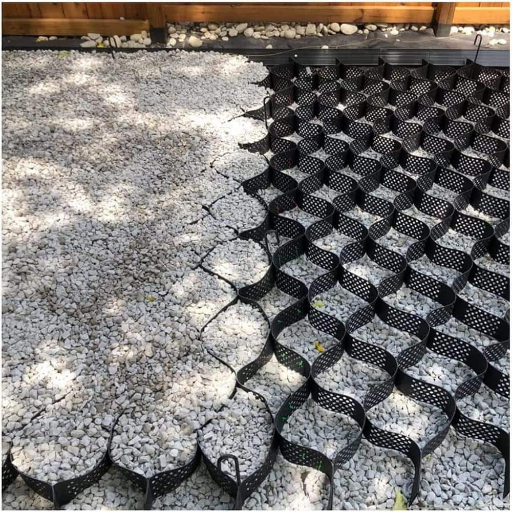
Geocell freeways are woven beside many cropping patterns. Soil stabilization, erosion control, and dispersions of load are the most common applications. With the dimension of its environmentally friendly aspects, it serves our era.
Stabilization and Reinforcement
With a three-dimensional honeycomb structure, geocell ground grids have been forecasted for excellent soil stabilization and reinforcement. Load distribution has been improved up to 50% reduction in soil displacement majorly through recent studies and massive loads. Hence, it can be used in situations that require building strong driveways, slope stabilization, and retaining wall reinforcement.
The geocell material, generally high-density polyethylene (HDPE), is designed such that it would resist deformation under high stress or temperature changes. Some data indicated that from the implementation of geocells on slopes, the erosion rate on the surface was brought down about 88%, good enough to conter erosion in areas prone to heavy rainfall or water runoff.
Moreover, in road construction, the application of geocell can increase pavement life by about 30% and reduce about 40% of the aggregate material required for construction, according to recent industry reports. It is this cost-saving factor coupled with the environmental advantage of reducing carbon footprints that makes geocells exceptionally important in modern infrastructure development.
Environmental Benefits of Permeable Gravel
In sustainable construction, the permeable gravel is gaining ground for its stormwater management and environmental effect. Its porous structure allows the water to flow directly underground; thus, it prevents flooding and water runoff. According to some findings, a permeable gravel system can abate stormwater runoff by 80%, be it indirect intensity, thus releasing great pressure on urban drainage. Further, these systems help decrease the load of pollutants, perhaps oil, heavy metals, and sediment, entering the waterways through the departing of filtration at the source.
One of the other drainage-related perks is that permeable gravel improves the recharge of groundwater. It allows natural infiltration of water for replenishing local aquifers and stabilizing water tables. When paired with reinforcement by geocells, permeable gravel becomes a suitable green solution for infrastructure projects like parking lots, access roads, and pedestrian pathways; thereby, nurturing green conservation and offering cost-savings in complicated drainage systems and maintenance.
Savings for Driveways and Parking Lots
Permeable gravel for driveway and parking lot construction offer substantial savings during installation and throughout maintenance. Recent studies have found that permeable gravel reduces the need for complex drainage works by managing stormwater on-site. In contrast, conventional asphalt or concrete-based systems require extensive stormwater management interventions such as catch basins or underground drainage networks, which contribute significantly to the overall project cost. On the downsides, permeable gravel accounts for a price cut of approximately 30% for the entire project, subject to site conditions.
Furthermore, maintenance costs are drastically lowered. An asphalt surface demands periodic sealing and repairs, unlike permeable gravel, which minimizes surface wear and resists cracking even when under heavy loads. For parking lots and high-traffic areas, this equates to further savings on resurfacing and repair costs. Recent data shows that permeable gravel solutions offer a lifespan of about 15-25 years under normal upkeep methods, thus assuring long-term advantages for property owners.
Finally, permeable gravel’s great eco-friendliness plays towards its cost-effectiveness. Many of the municipalities and governments award grants or rebates for the use of sustainable building materials, particularly for green infrastructure projects. This practice can go a long way towards subsidizing installation costs, thereby making permeable gravel for driveways and parking lots an environmentally and economically sustainable option.
Installation Process for Geocell Driveways
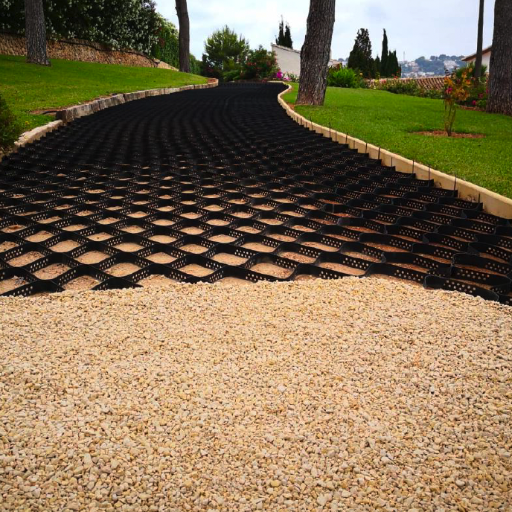
For a geocell driveway installation, the first step is to prepare the site through excavation and leveling. Following this, a layer of geotextile would be placed to prevent weed growth and contribute to stability. Next, the geocell grids would be laid out, secured in place, and filled with gravel or an appropriate infill material. The final step would involve compacting of the surface for smooth finishing and stability.
Preparation and Planning
Proper preparation and planning are very important for the successful installation of a geocell driveway. Initially, conduct analysis for on-site soil conditions, since geocells work best on well-draining soil. Recent data show that geocells can improve load distribution capacity by as much as 50%, therefore, they are best-suited for surfaces with medium to heavy traffic. Now, use a laser level or stakes for marking out the grading level accurately in order to corroborate in drainage of water and good foundation for the geocell system.
Thereafter, calculate the area and materials needed for installation. For example, geocell grids are designed from 3-inch to 8-inch heights, depending on the load requirements of the particular application. It has been observed through several studies that by using geocell reinforcement, the thickness of base layers can be reduced by 50%, maintaining the performance, thus providing an ideal scenario for optimum material utilization and cost. Besides, decide on the infill material types such as gravel, sand, or recycled concrete, keeping in mind that gravel offers the best compaction and drainage for long-term serviceability.
Step-by-Step Installation Guide
Site Preparation
Clear the site of any vegetation and level it for installation of geocell grid. Remove debris, vegetation, or any loose material that can affect operations on the working surface. Compacting the sub-base eventually to a uniform density level will guarantee better results. The latest recommendations suggest compaction be at least 95 percent of the density obtained from Standard Proctor test for best results.
Placement of Geotextile Fabric
A good quality geotextile fabric is laid across the prepared area so as to act as an interface and filtration layer. This will prevent the intermixing of the subgrade with the infill materials. A tensile strength of a minimum of 80 kN/m is generally considered to be the lowest acceptable for geotextiles in most reinforcement applications.
Expansion and Anchoring of Geocell Grids
The honeycomb structure of the geocell grids is expanded and laid on the geotextile fabric. Keep the geocells in place using an anchoring system such as stakes or pins; this is especially necessary for sloped surfaces. Recommendation on anchoring standards would be one stake per cell on slopes up to 3H:1V and increase density for steeper slopes.
Fill the Geocells with Chosen Material
Fill the expanded geocells carefully with selected infill material. Gravel is recommended where there is requirement for highest drainage and load distribution efficiency with maximum particle size of 20 mm and minimum of 50 mm. After placing the filler, the compaction ensures stability and minimizes settlement. As per research, the structural load-bearing capacity of well-compacted gravel infill can be increased by 300%.
Top Layer Finishing
If the top layer is an asphalt or concrete layer to be provided over a geocell structure compacted in assemblies for roadways or parking areas, it will further increase the durability of those structures while providing a smooth surface for vehicles and pedestrian walkways.
Inspection and Maintenance
Subsequent to installation, inspections should be carried out to check for proper alignment and compaction of the geocell structure. Debris removal, also known as periodic maintenance, and monitoring erosion will all prolong the life of the geocell system. Industry reports state that properly-maintained geocell installations can exceed 20 years in periods of extremely high loads.
Following these detailed steps will ensure that the geocell reinforcement systems work well from day one into the distant future, offering optimization in structural integrity and cost-effectiveness.
Tips for Compaction and Load Support
Recognized methods with updated data should be considered to obtain the best compaction and load support within geocell systems. In a most recent study on soil stabilization, it had been found that a compaction effort of 95% of Modified Proctor Density affords an optimum load distribution for most geocell applications. It was also reported that granular subbase materials such as crushed stone will provide the greatest geosystem performance by offering uniform particle interlock and drainage.
One of the latest innovations is the use of polymers of an advanced nature in manufacturing geocells, increasing tensile strengths by up to 30% when compared with conventional thermoplastic polymers. This qualifies the structure to withstand heavier and more frequent loads without deteriorating with time. Furthermore, according to reports, geocell systems allow for a reduction of up to 50% in the thickness of the base layer, leading to decreased material costs while maintaining load-bearing capacity.
Field studies reveal that geocells can reduce rutting by about five to seven times compared with unreinforced systems and, if properly maintained, will also prolong intervals to re-compaction maintenance cycles, resulting in fewer operational disruptions and lower sustaining costs for high-load applications such as highways and airport runways.
Updated innovations have provided engineers and contractors with this state-of-the-art approach toward efficient and sustainable construction.
Uses of Geocell Driveways
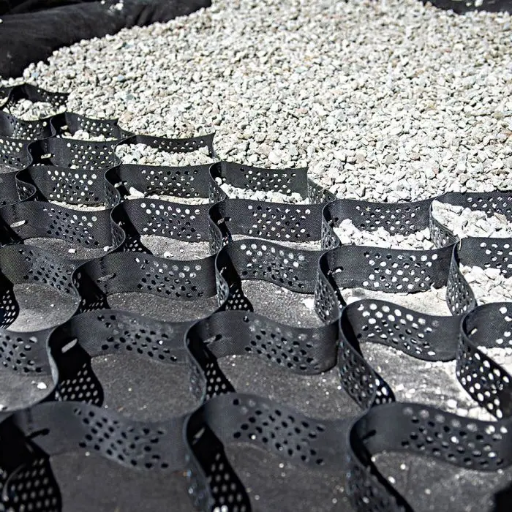
In residential, commercial, and industrial sectors, geocell-based driveways are presented as means for the enhancement of the stabilization of the soil and load distribution. They are essentially meant to reduce erosion, support heavy traffic, and provide an environmentally sound surface for the construction of driveways.
Residential Areas
Geocell technology is getting a wider acceptance among residential driveways for a long-term solution in soil stability and drainage of rainwater. Driveways reinforced with geocells would help ensure minimal rutting and potholes so the residents could enjoy years of smooth operations. Recent studies indicate that geocell-reinforced surfaces reduce the vertical and lateral displacement of soil by up to 50%, proving that they are highly effective in areas having variable soil conditions.
These geocell driveways also promote environmental sustainability by passing on the permeable materials that better allow water to seep into the ground naturally, thus reducing runoff and mitigating potential flooding. As per the sustainability reports, the permeable geocell systems are capable of increasing groundwater recharge rates by almost 30%. Hence, geocell driveways really present a practical and environmentally fashionable option for any modern-day home.
Commercial Parking Lots
Commercial parking lots increasingly embrace geocell systems as their solution in terms of durability and conservation concerns. Such systems handle heavy loads and are therefore suited to zones with constant traffic of cars, trucks, and delivery vehicles. Also, their permeable nature helps considerably in stormwater detention, thus curtailing runoff and minimizing hazards of localized flooding.
As per the latest data, permeable pavement systems, which include geocells, reduce the surface runoff by 90% when compared to traditional asphalt or concrete surfaces. This remains in line with conspicuous sustainability planning of many corporations that seek to comply with environmental regulations and awards such as LEED (Leadership on Energy and Environmental Design). Furthermore, a Google review of environmental studies shed light on how geocell-reinforced parking surfaces can extend the life of pavements by 25%, thereby cutting maintenance and replacement costs in the long run.
Thus, using geocell technology, companies set the stage for resilient infra while dynamically engaging water conservation practices through groundwater recharge. This would mean coalescing environment-conscious good looks underscored by cost-cutting measures with modern durability-the epitome of sustainable design for today’s commercial-space realization.
Walkways and Landscape Improvement
Walkways and landscaping are instrumental in determining the perspective and functionality of a property. The latest developments related to materials and design techniques have facilitated the creation of abounding durable, pleasing, and green spaces in the outdoors. For instance, permeable pavers that allow water to permeate are getting more and more recognition for cutting down on stormwater runoff and encouraging the recharge of groundwater. According to recent studies, permeable surfaces may absorb 80-95% of rainfall, standing as a great measure against urban flooding.
Anti-erosive and high-surface-stability effects are also offered by geocell technology that has been incorporated into walkways. Geocells are a great option, especially in cases involving sloped areas where traditional options for paving do not provide enough support. Reports also revealed that geocells could possibly boost load capacity of walkways by up to 50%, realizing long-term per capita durability, at lesser maintenance.
Landscaping also works well with sustainable initiatives such as native planting and recycled-materials use. Reports establish that well-landscaped properties can experience up to a 15% increase in value, indicating the economic and visual effects of formally executed outdoor enhancements. The upgrades define area upgrades for augmentation and practically while compelling green initiatives demanded by energy-conscious future.
Professional Opinions with Regard to Geocell Driveways
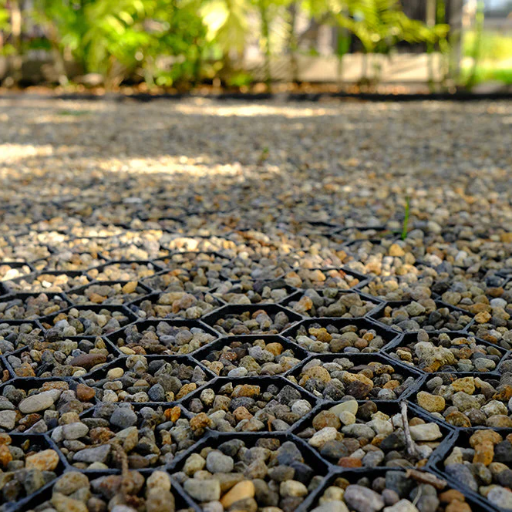
A geocell driveway system stabilizes drainage conditions, limiting erosion and distributing loads. When correctly installed, these are long-lasting, eco-friendly systems requiring little maintenance. Experts state that geocells are most useful when placed in high-traffic areas or where soil conditions are poor, as they provide long-term support for improved drainage and decrease ponding of water with surface deterioration.
Industry Insight
Many industry professionals emphasize the versatility of the geocell driveway system and their ability to withstand heavy loads. According to recent reports, geocells are constructed of high-density polyethylene (HDPE), which enables them to withstand high pressures and resist environmental degradation. It is well established that geocells can improve the bearing capacity of soils by up to 30%, giving them applications ranging from residential to commercial and industrial.
Additionally, geocell installations allow surface water runoff to be greatly reduced through natural drainage via the cell structure. According to a study in soil stabilization, construction can extend the life of the reinforced surface by up to 50%, mainly due to the reduction in cracking and formation of potholes under stress. This makes geocell highly suitable for areas with bad soil conditions or those that constantly experience heavy rain and heavy traffic.
Traditional paving solutions versus Modern ones
In comparison with conventional paving systems comprising asphalt or concrete surface, geocell-driveways show considerable advantages such as in terms of durability, environmental impacts, and cost-efficiency. Conventional asphalt formulations of driveways require continuous maintenance almost every 10-15 years, depending upon environmental conditions, which will add to extra costs in the long run and further increase the environmental burden in terms of carbon emissions generated during the production of asphalt and application processes.
Geocells present a green and more durable alternative. According to recent research, surfaces reinforced using geocells may reduce material consumption by approximately 50% owing to their property of stabilizing and reinforcing weaker subgrade soils. Moreover, another 25% reduction in maintenance costs can be achieved by the geocell system. This is because the geocell system considerably cuts down the cracking and erosion that are usually caused by heavy traffic or fluctuating temperatures.
Another complementary environment-friendly feature is that the geocell system is permeable and allows rainwater to be absorbed into the ground, thereafter reducing surface runoff and preventing flooding. This is especially suitable for applications in areas receiving heavy rainfall. This combined with the ability to use local infill materials such as gravel or recycled concrete actually positions geocells as an eco-geared construction alternative with a low carbon footprint.
In general, in terms of durability, greater environmental benefits, and cost-efficiency, traditional paving solutions are bested by geocell-and this status has made geocell to earn greater attention with time in the construction industry.
Future Trends: Gravel Driveway Solutions
Technology-enabled advances are being implemented to continuously improve and sustain the performance of gravel driveway solutions. Smart permeable systems are one alternative, focusing on controlling water flow and preventing runoff. Recent research has revealed that smart permeable systems may raise the infiltration rates of water by as much as 30%, significantly diminishing the threat of flooding in areas subjected to heavy rainfall.
The emerging trend considers further use of recycled materials in driveway construction. Studies indicate that the incorporation of recycled concrete or plastics within gravel composites greatly cuts construction costs, also reducing environmental impact by as much as 40%. This is in line with worldwide initiatives to advance circular economies and select down construction waste.
Thanks to recent developments in geotextiles and geocells, the construction of safer and more durable driveways is now possible. The new generation of geocell can resist heavy loads, some systems being rated at bearing capacities of more than 100 tons per square meter. This renders them useful and cost-effective alternatives in both residential and commercial fronts to traditional asphalt or concrete.
Along with the application of renewable manufacturing processes, smart sensors will further enhance the industry. Smart sensors embedded in driveway materials can trace wear and tear so that maintenance is done promptly and thereby consequently extending the life of the surface. These progressive features will transform modern gravel driveway solutions into a much more durable, environment-friendly, and technicians orientated venture.
Reference sources
1. Laboratory and Field Evaluations of Geocell Reinforced Bases for Locally Available Material in the Himalayan Region
- Authors: Bharath Gottumukkala, Bharatram Mehar, Divakar Minchala, Subramanya Prasad Pulikanti, K. Kuna
- Publication Date: October 28, 2023
- Journal: International Journal of Geosynthetics and Ground Engineering
- Citation: (Gottumukkala et al., 2023, pp. 1–11)
- Summary:
- This study evaluates the performance of geocell-reinforced bases using locally available materials in the Himalayan region. The research involved both laboratory and field tests to assess the effectiveness of geocells in enhancing the load-bearing capacity and stability of the base materials.
- Methodology: The authors conducted unconfined compressive strength tests and field load tests to compare the performance of geocell-reinforced bases against unreinforced bases. The results indicated significant improvements in load distribution and reduced deformation in geocell-reinforced sections.
2. Geomechanical Performances of Geocell Reinforced Retaining Wall Backfilled with Magnesia-Based Cement Stabilized Marine Fill
- Authors: Chikezie Chimere Onyekwena, Qi Li, Ishrat Hameed Alvi, Abdul Ghaffar, Xianwei Zhang
- Publication Date: May 18, 2023
- Journal: Marine Georesources & Geotechnology
- Citation: (Onyekwena et al., 2023, pp. 617–633)
- Summary:
- This paper investigates the geomechanical performance of geocell-reinforced retaining walls using magnesia-based cement-stabilized marine fill. The study highlights the potential of geocells to enhance the stability and performance of retaining wall structures.
- Methodology: The authors employed a combination of laboratory tests and numerical simulations using the finite element method (FEM) to analyze the performance of the geocell-reinforced walls under various loading conditions. The findings demonstrated that geocell reinforcement significantly improved the stability and reduced deformation of the retaining walls.
3. Influence of Different Infill Materials on the Performance of Geocell-Reinforced Cohesive Soil Beds
- Authors: Yang Zhao, Zheng Lu, Jie Liu, Jingbo Zhang, H. Yao
- Publication Date: July 30, 2023
- Journal: Scientific Reports
- Citation: (Zhao et al., 2023)
- Summary:
- This study presents a comprehensive investigation into the performance of geocell-reinforced cohesive soil beds, focusing on different infill materials. The research emphasizes the importance of selecting appropriate infill materials to maximize the benefits of geocell reinforcement.
- Methodology: The authors conducted numerical simulations and laboratory tests to evaluate the performance of geocell-reinforced soil beds with various infill materials. The results indicated that the mechanical properties of the infill material significantly influenced the overall performance of the geocell reinforcement.
Frequently Asked Questions (FAQs)
What is a geocell driveway, and how does it work?
A geocell driveway is a driveway reinforced with a three-dimensional grid structure made of high-density polyethylene (HDPE) or other materials. This grid system ensures that loads are well-distributed down to the bearing surface of the roadbase so that the beds start sinking and deforming as time goes by.
How do I install the gravel driveway?
Setting up a gravel driveway using geocell systems consists of various steps. The first is site preparation, clearing vegetation, and leveling the ground. Afterward, lay non-woven geotextiles over the leveled ground to serve as a drainage layer that keeps weeds out. After this, unfold the geocell grid, stake it down adequately, fill with gravel or aggregate, and roll or compact the material into a solid surface. Regular maintenance must be performed to extend its longevity.
What are the benefits of using gravel grid for a driveway?
Enhancing the support to loads, erosion, and drainage are among the benefits of gravel grid for driveways. It keeps the gravel in place and lessens long-term maintenance needs that are usually required to correct shifting, ruts, and potholes.
Is it possible to make heavy gravel roads with geocell?
Yes, a geocell system can be used for heavy applications, including gravel roads. The grid supports the lateral loads of very high magnitude and stabilizes the roadbed, making it suitable for heavy traffic or areas where vehicles with large loads are commonly moving.
What materials do I require to install a geocell driveway?
A geocell driveway installation requires geocell grids, gravel or aggregate for filling, non-woven geotextiles for ground stabilization, and basic tools including a shovel, rake, and compactor. Depending on your design, you might want to include garden edging or pavers to enhance the overall finish.
How is a geo grid driveway better than traditional gravel driveways?
The geo grid driveways offer excellent stabilization compared to traditional gravel driveways. The grid system prevents shifting and spreading of gravel, ensuring a far more durable surface. Also, these can cut down the frequency of maintenance, which, undoubtedly, is a useful factor in any homeowner’s style of renovation in the outdoors.
Are erosion control measures needed for gravel driveways?
Erosion control measures are to be implemented, especially for gravel driveways in locations with heavy rainfall or sloped terrains. Geocell systems would serve well in mitigating erosion by stabilizing the gravel that would otherwise wash away. This does not only safeguard the driveway but also the rest of the landscape.
What is its purpose in the compaction of the geocell driveway installation?
Compaction helps the geocell driveway installation in packing the gravel or aggregate tightly within the grid structure. This thorough process of compaction is enhancing the load support and general stability of the driveway, making it less susceptible to sinking and deformation over time.

